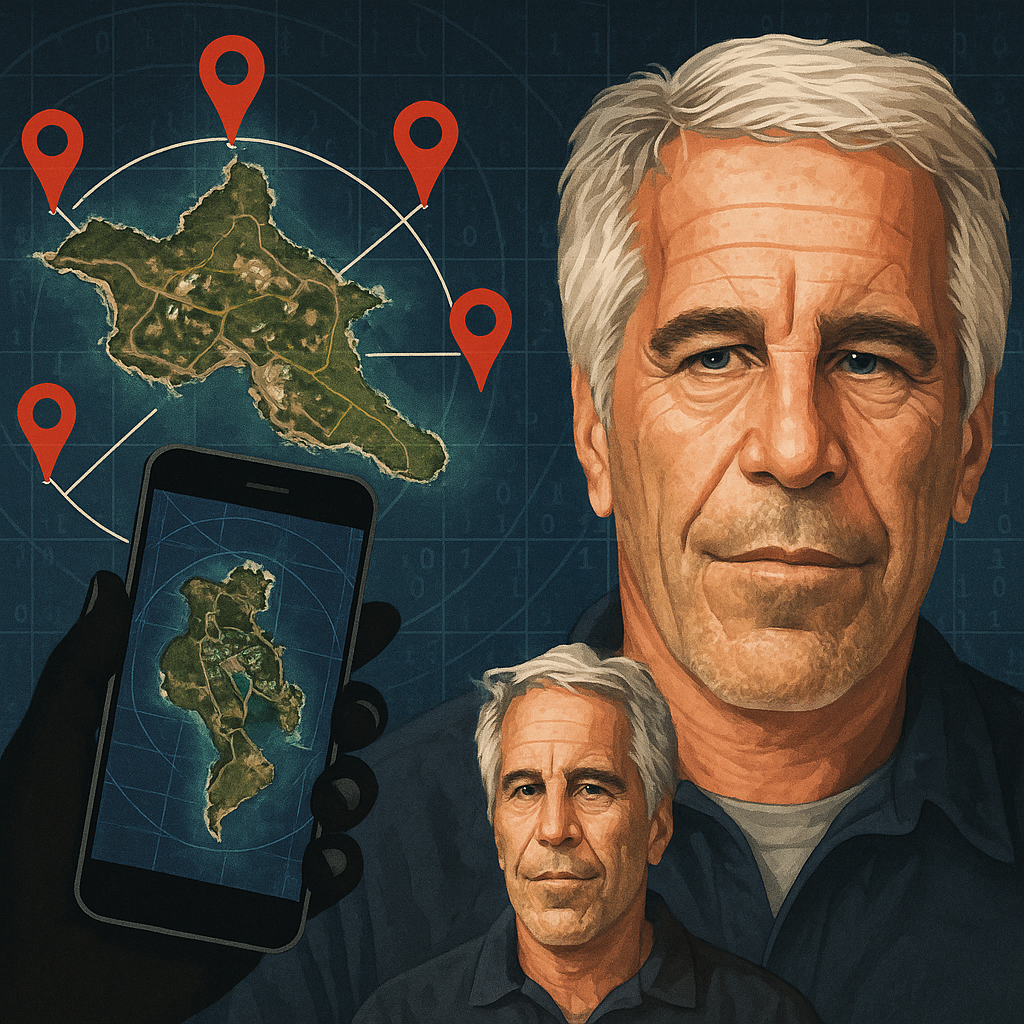No One Escapes the Signal: Tracking Phones on Epstein’s Island
digital footprints of over 200 mobile phones that visited Epstein’s private island, Little St. James, between 2016 and 2019. Through the use of leaked location data, the investigation mapped where these visitors came from, where they went, and who they might be.-Rafael Benavente

Surveillance on the Island: How Epstein’s Guest List Was Unmasked by Data
By Rafael Benavente
Even in death, Jeffrey Epstein continues to cast a long and disturbing shadow over the global elite. A recent WIRED investigation has uncovered something chilling: the precise digital footprints of over 200 mobile phones that visited Epstein’s private island, Little St. James, between 2016 and 2019. Through the use of leaked location data, the investigation mapped where these visitors came from, where they went, and who they might be.
But this exposé isn't just about Epstein. It’s about the terrifying scope of modern surveillance—and the reality that, if you carry a smartphone, someone, somewhere is watching.
Digital Breadcrumbs: What the Data Revealed
The data was sourced from a defense-connected location broker, Near Intelligence (now known as Azer), and consisted of 11,279 GPS coordinates. WIRED analysts were able to trace these pings to within centimeters—revealing travel paths, neighborhoods, hotels, yacht docks, and even specific structures on the island.
The trails showed a steady stream of visits to Epstein’s infamous hilltop temple, beach areas, the main villa, and the private dock. Many of these visits occurred after Epstein's 2008 conviction for soliciting a minor.
Even more unsettling: the location trails didn’t stop at Little St. James. Investigators followed the devices back home—mapping them to gated communities in Palm Beach, Martha’s Vineyard, Michigan, and even across the street from Trump Tower in Manhattan.
Who Visited—and Where Did They Come From?
Of the 200+ mobile phones identified, visitors hailed from 26 U.S. states and 80 different cities. The most common origins included:
- Florida
- Massachusetts
- Texas
- New York
- Michigan
There were also pings traced to international locations, including the Cayman Islands, Australia, and Kyiv, Ukraine. However, no European data appeared—possibly due to the continent’s stringent privacy laws under the GDPR, which restrict the commercial use of location data.
It’s critical to note that not all of these visitors were necessarily perpetrators. The phones could have belonged to employees, victims, or third-party associates. But the sheer volume and continued flow after Epstein’s conviction raises eyebrows—and questions.
The Role of Near Intelligence—and the Privacy Time Bomb
This data leak wouldn’t have been possible without the shady ecosystem of ad tech and surveillance capitalism. Location data is often collected by apps—then packaged and resold by companies like Near Intelligence.
Their clients, which include defense contractors and corporate advertisers, can draw a virtual box around an area (like Epstein’s island) and retrieve every mobile device that pinged there—along with patterns of movement, home addresses, and frequent locations.
These datasets were not even protected behind paywalls. WIRED discovered the raw, searchable maps through a Google-indexed webpage. In other words: someone could trace the footsteps of Epstein’s visitors just by Googling the right terms.
A Bigger Story: Epstein, Surveillance, and the Illusion of Anonymity
Beyond the horrors of what happened on Epstein Island, this story reveals something deeper about the collapse of digital privacy:
- Apps we trust daily are quietly broadcasting our every movement.
- Data brokers make billions selling that data to unknown buyers.
- Surveillance is no longer about spying—it’s about indexing your life.
If this level of scrutiny can be turned on billionaires and former presidents, what hope does the average person have?
After Epstein: What’s Next for the Island?
Following Epstein’s death in a Manhattan jail cell (a death still surrounded by questions), Little St. James and nearby Great St. James were sold to billionaire investor Stephen Deckoff in 2023 for $60 million. He reportedly plans to convert the island into a luxury resort.
Meanwhile, Ghislaine Maxwell, Epstein’s longtime associate, was convicted in 2021 for sex trafficking and is currently serving her sentence. She was arrested using—ironically—cell phone tracking data, the very same type that WIRED used to expose the Island’s guests.
Conclusion: The Island May Be Sold, But Its Ghost Lives On
As the investigation into Epstein’s global network continues, the WIRED revelations are a stark reminder: technology can be used to uncover the past—but it can just as easily be used to exploit the present.
When your phone becomes a witness, there’s no such thing as off-the-record.
By Rafael Benavente
Credits:
Special thanks to WIRED and investigative reporter Drew Morra for spearheading this groundbreaking exposé. Full video: We Tracked Every Visitor to Epstein Island | WIRED
